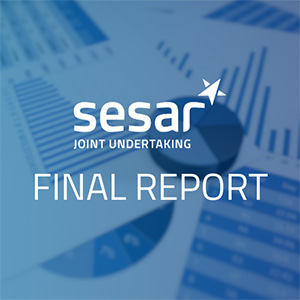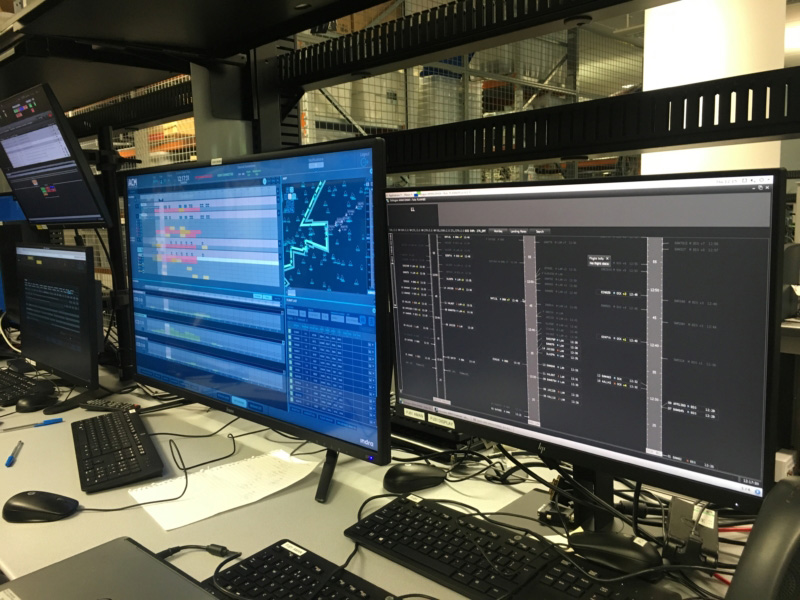Addressing capacity around airports
Air traffic is increasing in Europe especially around airports. One way to address growth efficiently and in environmental is by developing solutions to optimise the capacity of airspace in the terminal manoeuvring areas (TMAs) near airports. Given these challenges and ambitions, the SESAR enhanced arrival and departures project (PJ01 EAD) addressed the development of concepts, tools and procedures to increase the capacity of extended TMAs (E-TMAs) to meet forecast traffic growth in a safe, cost-effective and environmentally sustainable manner. This was achieved by taking advantage of the latest technological developments from both an airborne and a ground-system perspective and through secure sharing of data.
Project Objectives
The project focused on operational improvements to the flow of arriving and departing traffic within the E-TMA that aim to increase airspace capacity and cost efficiency, improve safety and predictability and provide greater fuel efficiency and environmental sustainability.
|
PJ.01-01 Extended arrival management with overlapping AMAN (arrival manager) operations and interaction with demand-capacity balancing (DCB) |
The project aimed to investigate the use of queue management techniques that are extended further from the arrival airport, more integrated with airport and network-wide demand and capacity balancing and make use of more accurate and predictable arrival timings. The project assessed the impact on the en-route sectors of multiple arrival management systems operating out to extended range and considered how to balance the needs of those involved. The methods for sharing data between systems and reconciling the constraints of different systems was also addressed. |
|
PJ.01-02 Use of arrival and departure management information for traffic optimisation within the TMA |
The project aimed to investigate the use of information from departure management systems from multiple airports, and the integration of this information with information from arrival management systems, to optimise the flow of traffic within the E-TMA. The various sources of demand information was combined to adjust the departure sequence, first manually and then with automated support, to provide more consistent delivery of traffic through constrained points within the TMA and into the en-route phase of flight. |
|
PJ.01-03A Improved parallel operations |
The project aimed to investigate the improvement of parallel approach operations through the application of RNP navigation specifications and the development of enhanced ATC procedures. |
|
PJ.01-03B Dynamic E-TMA for advanced continuous climb and descent operations |
The project aimed to investigate the dynamic use of routes within the E-TMA to improve the utilisation of airspace as well as to enable the maximum use of continuous descent and continuous climb operations and efficient connections to free route operations. The project developed appropriate methods of decision support for the selection of suitable routes which brought maximum benefits according to differing traffic and capacity constraints, e.g. ranging from dense and complex E-TMAs to low demand E-TMAs. Methods were also needed to be developed to expediently share these elements of the ATC plan with aircraft. |
|
PJ.01-05 Airborne spacing flight deck interval management |
The project aimed to investigate the use of techniques that enable pilots to manage their spacing, sequencing and merging with other traffic, including by providing detailed traffic information in the cockpit. The use of this information to maximise the ability of aircraft to maintain visual separation was also investigated. The opportunities, offered by the various potential applications of delegation of spacing and assisted visual separation to the cockpit, was also understood. Equally, the interactions between these applications and the potential challenges and benefits were clearly defined. |
|
PJ.01-06 Enhanced rotorcraft and general aviation (GA) operations in the TMA |
The project aimed to examine methods that enabled better integration of Rotorcraft and GA operations in the TMA, while reducing the potential impact of these operations on other airspace users. These methods provided arrival and departure routes that do not conflict with other airspace users, including in poor weather and low visibility, to remove rotorcraft from active runways using rotorcraft specific procedures and improve access to and from landing sites at both airports and remote locations. |
|
PJ.01-07 Approach improvement through assisted visual separation |
The project aimed to investigate the use of techniques that enable pilots to manage their spacing, sequencing and merging with other traffic, including by providing detailed traffic information in the cockpit. The use of this information to maximise the ability of aircraft to maintain visual separation was also investigated. The opportunities, offered by the various potential applications of delegation of spacing and assisted visual separation to the cockpit, was also understood. Equally, the interactions between these applications and the potential challenges and benefits were clearly defined. |




